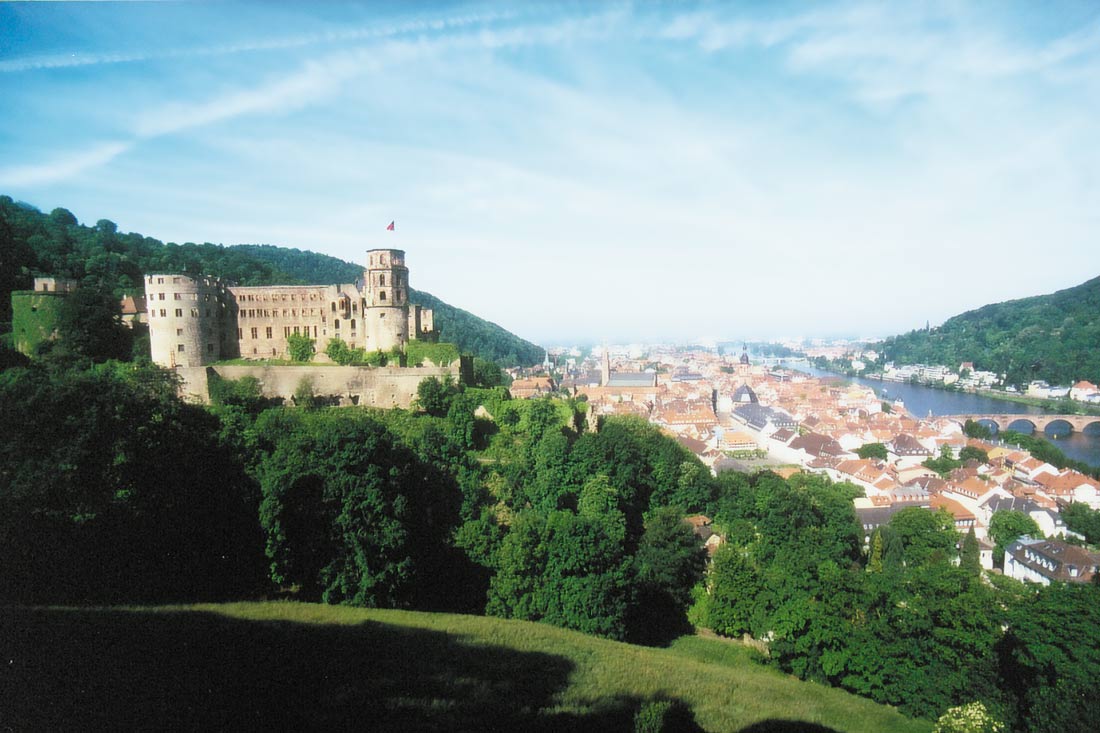
The Heidelberg Castle
The extension and building up of Heidelberg to the level of a Prince Elector’s residence and the founding of the university, both of which occurred in the second half of the 14th century, gave the previously insignificant spot growing status as a city. As the city of residence of the German Prince Elector, Heidelberg also got its famous castle, the construction of which, however, took more than 200 years (1400 – 1619).
Started as a fortress, the Castle developed its representative character under Frederick V, Elector Palatine (reigned 1610 – 1623). The greatest structural achievement of this Elector, who has gone down in history as the “Winter King,” was the laying out of the Hortus Palatinus. Contemporaries declared this garden to be the eighth wonder of the world. However, its completion was delayed by the Thirty Years’ War.
The phase of high culture in the Castle ended when the Prince Elector and his wife went to Bohemia in 1619. After being destroyed several times – the last time in 1693 – it was initially allowed to go to ruin. In 1720 Prince Elector Carl Philipp moved the residence from Heidelberg to Mannheim, and built one of the biggest European baroque castles on the model of Versailles there.
Already made widely popular by the romantic poetry and art at the beginning of the 19th century, the Heidelberg Castle ruins found their savior in a refugee from the French Revolution, Charles de Graimberg. Graimberg came here in 1810 to make a landscape painting including the Castle. He stayed another 54 years until the end of his life, and as a collector built up the basis of today’s Kurpfälzisches Museum (Palatinate Museum), and dedicated himself to preserving the Castle ruins.
With the passage of time, the location above the Neckar, the rich history of its construction, the exhibitions and museums incorporated into it, the outsized “Great Wine Barrel” and not least the Castle gardens have made the Castle one of the great European cultural monuments. The Ottheinrichsbau of the Castle houses the Deutsche Apothekenmuseum (German Pharmacy Museum), which contains a unique collection of pharmacist’s dispensing equipment, containers and various medicaments.
The most exciting and easiest path to the famous cultural monument is offered by the Bergbahn (funicular railway), which starts at the Kornmarkt (Grain Market). In its capacity as the oldest German cable railway it attests to the long-standing popularity of Germany’s biggest castle ruins to a large number of visitors. Every year nearly a million people make the pilgrimage to the heights in order to take in the romantic ambience high above the Neckar.
Interested in learning more about Heidelberg?
See our article: Heidelberg, Germany — for travelers
German Castles and Palaces
See our article: Introduction: German Castles and Palaces
and here are all our articles about Germany’s Castles and Palaces

